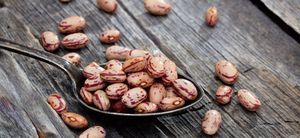COVID-19 May Boost Northern Plains Specialty Crops Demand
 There may be more demand for hard red spring wheat, durum, dry edible beans and pulse crops in the future as a result of the changes people have made in the shopping and dining habits due to COVID-19, says Frayne Olson, North Dakota State University Extension grain marketing specialist.
There may be more demand for hard red spring wheat, durum, dry edible beans and pulse crops in the future as a result of the changes people have made in the shopping and dining habits due to COVID-19, says Frayne Olson, North Dakota State University Extension grain marketing specialist.
People are eating more meals at home and fewer in restaurants. They also have been purchasing more simple foods such as pastas, soups, beans and hamburgers, he says.
Should the trend continue after the pandemic ends? No one knows. If it does, long-term demand for basic foods may grow. As a result, there may be new opportunities to grow specialty crops, hard red spring wheat and durum, Olson says.
The opportunities “are not going to drop in your lap, though,” Olson says. You have to be “paying attention” to the specialty crop markets and staying in touch with buyers.
Olson recently wrote about how COVID-19 is affecting ag markets. Some excerpts include:
Ethanol. States are beginning to relax the stay-at-home orders, and motor fuel demand is recovering. However, many forecasters don’t expect motor fuel demand to fully recover for another 12 to 18 months. Corn demand from the ethanol industry is expected to increase slightly from today’s levels.
Meat. Overall consumer demand for meat has remained strong, but the most popular type of meat products and packaging sizes have changed. Restaurants purchase meat in bulk while individuals purchase small packages in the grocery store to be prepared at home. High-value meat cuts such as steak and ribs are most often sold to restaurants, while hamburger, chicken and pork chops are more often sold in grocery stores.
Restaurant closures have reduced the demand for high-value meats in bulk packaging, while demand for small consumer-packaged hamburger, chicken and pork has increased. Thus, the farm-level prices for beef, chicken and pork have decreased faster than feed prices.
Profit margins for the livestock producers, including dairy, have fallen dramatically. Lower livestock prices and profit margins reduce the demand for feed, such as corn and soybean meal, because of tighter budget constraints. Even though total livestock numbers are forecast to increase slightly during the next year, increased use of forages in beef and dairy rations could limit the amount of extra feed needed.
Vegetable oil. Demand for vegetable oil, such as soybean, canola and sunflower oil, is expected to remain relatively stable. Vegetable oils are most often used for cooking and frying and have a comparatively long supply chain from producer to consumer. Vegetable oils also make up a somewhat small portion of the total cost for food products, so a change in the price of the oil will have a small impact on the amount used.
Wheat and durum. Demand for bread, pasta, cake, cookies and cracker products requiring wheat and durum has also been stable.
Bread, pasta and other wheat products typically make up a small portion of the total cost for a meal. They are easy to include in meals prepared at home, ready-to-eat products or meals eaten at restaurants. Macaroni and cheese and pizza have become more popular during the pandemic.
Export sales. Changes to international demand for crops is by far the most complex and difficult to forecast. Effective demand can be very different in each country and often varies by region within a country.
For example, consumers in Mexico likely will adjust differently to the coronavirus pandemic than consumers in Japan. Mexico and Japan are major buyers of U.S. agricultural products. In addition, concerns about possible supply chain disruptions can impact the volumes of U.S. products imported by each country. Fortunately, the export sales for U.S. corn, soybeans and wheat are near normal levels and are not expected to change dramatically due to COVID-19.
Grocery sales up. U.S. consumers have changed the way they buy food but have made relatively small changes in the type of foods they buy. The amount of food purchased from grocery stores has increased, and purchases from restaurants have decreased.
More people are ordering their groceries online and requesting home delivery rather than going to the grocery store. We’ve also seen an increase in the number of meal kits or boxed meals bought by people with basic cooking skills or who have little time to prepare a meal from scratch.
Companies at all stages in food supply chains are struggling to understand the rapidly changing consumer preferences and how many of these changes will be permanent versus temporary. In other words, will they see structural shifts in their respective industry and how will these impact their company’s role in the supply chain?
Price impact. Structural shifts typically don’t impact short-term crop prices, but they can influence longer-term price trends. No one can accurately predict all the impacts COVID-19 will have on crop prices, but everyone involved in agriculture will need to be watching for any shifts and adjust as quickly as possible.
Go online to see Olson’s complete report.
Source: Lon Tonneson, Dakota Farmer
